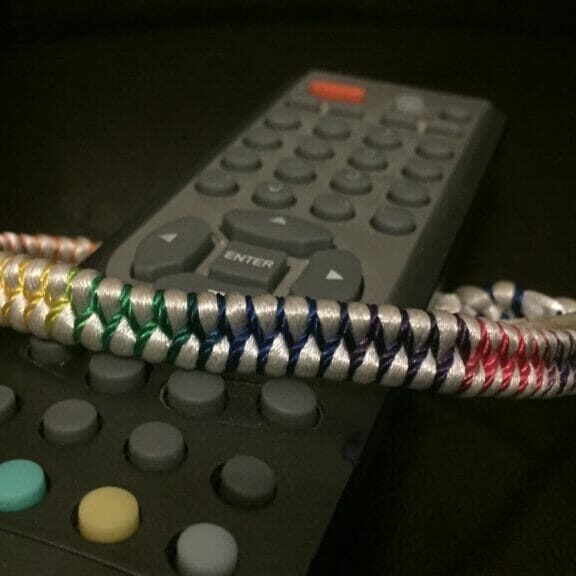
Happy, healthy and queer
Queer people exist in society, so why not on screens?
Have you ever seen yourself on TV? No, not actually you, but someone like you. Someone who is around your age that has similar features, a similar background, similar interests or is in a relationship like yours. For queer people, this is a rare occurrence or when it does happen, the relationship portrayed is usually not long term, happy or healthy.
Media has begun to introduce more queer people to our screens, but healthy queer relationships are still far and few between. TV and movies are known for using a method called “queerbaiting” in hopes of getting more viewership. Queerbaiting is when filmmakers or actors hint at a queer relationship but don’t follow through. Directors argue that of course this “will they, won’t they” is a true queer relationship. It’s all between the lines, just squint a little harder. But why should we have to squint?
Lack of representation
GLAAD is an American media monitoring organization, founded by LGBTQ2S+ people, that examines the representation of queer characters in media. According to GLAAD, of the 109 films released by major studios in 2017, only 14 had queer characters. Of those, half had these characters for less than five minutes of screen time. This is the lowest number since GLAAD began its annual reports in 2012.
We have lots of stories like Love, Simon, where a gay (usually white, teenager) struggles with their sexuality and eventually comes out. The end. But what happens after coming out? What about more than just a cheeky kiss as the credits roll? What about relationships?
We deserve diverse stories. More than just coming-out tales, we should see healthy queer relationships.
We should see queer characters who are more than just tropes and side characters (a.k.a: “the gay best friend”). Media should have complex characters that are more than their queerness; who have a personality besides who they like. These should be present in all types of media: films and TV shows, indie and blockbusters, shows for all ages.
We’re beginning to see more representation in kids and family television. According to GLAAD, Steven Universe held the first same-gender wedding on children’s television when Ruby and Sapphire married. Another example would be Adventure Time confirming the relationship between Princess Bubblegum and Marceline the Vampire Queen, or Mr. Ratburn’s wedding on the children’s TV show, Arthur.
However, we should see queer people of colour, of different ages, genders and sexualities.
“Bury your gays”
Asexuality is one aspect of sexuality that is heavily neglected.
GLAAD’s last TV analysis was for 2018-19, which found only two asexual characters: Todd Chavez from BoJack Horseman and Raphael Santiago from Shadowhunters. BoJack Horseman showed Todd having romantic relationships, including with another asexual person, which is something we aren’t seeing in other media. As of 2020, both shows have been cancelled.
Even if a character is originally ace or otherwise queer, when a story is converted to television or film, these characters tend to suddenly become involved in heterosexual relationships. In 2016, comic book writer Chip Zdarksy confirmed that Archie character Jughead Jones is asexual, yet in the show Riverdale, he is not.
But let’s say a show or movie includes a queer relationship. What are the odds the relationship will end happily?
Well, according to the “bury your gays” trope, very unlikely. This trope is when a queer character is killed off, which is so common that it’s become a stereotype.
In 2016, The 100 got under fire for doing just this. Two female characters, which had hinted at a possible relationship, finally got together. You think this would be a celebration for fans of the show, and the many people who had been rooting for them. However, in the same episode, one of them dies.
Multiple TV shows have seen this trope: Buffy the Vampire Slayer, The Walking Dead, Boardwalk Empire, Pretty Little Liars, House of Cards and more.
In fact, there’s a long list of this trope on Autostraddle.com, an online magazine for queer women and non-binary people. As of March 2016, and dating back to 1976, there has been 210 lesbian and bisexual female characters on TV that have died.
Queer relationships deserve happy endings too. Sure, not every relationship ends up working out, but how about we see some breakups and not constant death?
Finally, some progress
However, there’s been some progress.
According to GLAAD’s 2018-19 analysis, for the first time, LGBTQ2S+ people of colour outnumbered white LGBTQ2S+ people on broadcast TV, at 50 per cent to 49 per cent. Also, of the 857 regular characters on TV, 75 identified as LGBTQ2S+, which is the highest percentage GLAAD has found.
It’s beneficial for people to see themselves in something, but also for non-queer people to see diverse characters and relationships. After all, how will queer people and relationships be accepted and normalized in a society if TV and films — media which represents society and is for society — act like they don’t exist?






